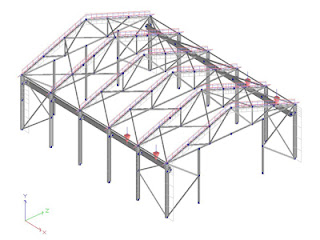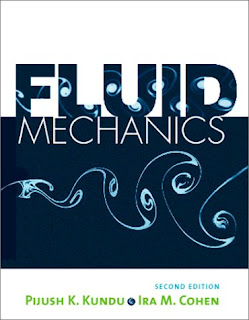 |
| Mechanical Engineering – machines |
- Statics and dynamics
- Strength of materials and solid mechanics
- Instrumentation and measurement
- Thermodynamics, heat transfer, energy conversion, and HVAC
- Fluid mechanics and fluid dynamics
- Mechanism design (including kinematics and dynamics)
- Manufacturing technology or processes
- Hydraulics and pneumatics
- Mathematics – in particular, calculus, differential equations, and linear algebra.
- Engineering design
- Mechatronics and control theory
- Material Engineering
- Drafting, CAD (including solid modeling), and CAM
advanced mathematical concepts including differential equations, partial differential equations, linear algebra, abstract algebra, and differential geometry, among others.
Mohr’s circle, a common tool to study stresses in a mechanical element
Mechanics is, in the most general sense, the study of forces and their effect upon matter. Typically, engineering mechanics is used to analyze and predict the acceleration and deformation (both elastic and plastic) of objects under known forces (also called loads) or stresses. Sub disciplines of mechanics include
* Statics, the study of non-moving bodies under known loads, how forces affect static bodies
* Dynamics (or kinetics), the study of how forces affect moving bodies
* Mechanics of materials, the study of how different materials deform under various types of stress
* Fluid mechanics, the study of how fluids react to forces
* Continuum mechanics, a method of applying mechanics that assumes that objects are continuous (rather than discrete)
Mechanical engineers typically use mechanics in the design or analysis phases of engineering. If the engineering project were the design of a vehicle, statics might be employed to design the frame of the vehicle, in order to evaluate where the stresses will be most intense. Dynamics might be used when designing the car’s engine, to evaluate the forces in the pistons and cams as the engine cycles. Mechanics of materials might be used to choose appropriate materials for the frame and engine. Fluid mechanics might be used to design a ventilation system for the vehicle (see HVAC), or to design the intake system for the engine.
Kinematics is the study of the motion of bodies (objects) and systems (groups of objects), while ignoring the forces that cause the motion. The movement of a crane and the oscillations of a piston in an engine are both simple kinematic systems. The crane is a type of open kinematic chain, while the piston is part of a closed four-bar linkage.
Mechanical engineers typically use kinematics in the design and analysis of mechanisms. Kinematics can be used to find the possible range of motion for a given mechanism, or, working in reverse, can be used to design a mechanism that has a desired range of motion.
Training FMS with learning robot SCORBOT-ER 4u, workbench CNC Mill and CNC Lathe
Mechatronics is an interdisciplinary branch of mechanical engineering, electrical engineering and software engineering that is concerned with integrating electrical and mechanical engineering to create hybrid systems. In this way, machines can be automated through the use of electric motors, servo-mechanisms, and other electrical systems in conjunction with special software. A common example of a mechatronics system is a CD-ROM drive. Mechanical systems open and close the drive, spin the CD and move the laser, while an optical system reads the data on the CD and converts it to bits. Integrated software controls the process and communicates the contents of the CD to the computer.
Robotics is the application of mechatronics to create robots, which are often used in industry to perform tasks that are dangerous, unpleasant, or repetitive. These robots may be of any shape and size, but all are preprogrammed and interact physically with the world. To create a robot, an engineer typically employs kinematics (to determine the robot’s range of motion) and mechanics (to determine the stresses within the robot).
Robots are used extensively in industrial engineering. They allow businesses to save money on labor, perform tasks that are either too dangerous or too precise for humans to perform them economically, and to insure better quality. Many companies employ assembly lines of robots, and some factories are so robotized that they can run by themselves. Outside the factory, robots have been employed in bomb disposal, space exploration, and many other fields. Robots are also sold for various residential applications.
 |
| Structural Analysis |
Structural analysis is the branch of mechanical engineering (and also civil engineering) devoted to examining why and how objects fail and to fix the objects and their performance. Structural failures occur in two general modes: static failure, and fatigue failure. Static structural failure occurs when, upon being loaded (having a force applied) the object being analyzed either breaks or is deformed plastically, depending on the criterion for failure. Fatigue failure occurs when an object fails after a number of repeated loading and unloading cycles. Fatigue failure occurs because of imperfections in the object: a microscopic crack on the surface of the object, for instance, will grow slightly with each cycle (propagation) until the crack is large enough to cause ultimate failure.
Failure is not simply defined as when a part breaks, however; it is defined as when a part does not operate as intended. Some systems, such as the perforated top sections of some plastic bags, are designed to break. If these systems do not break, failure analysis might be employed to determine the cause.
Structural analysis is often used by mechanical engineers after a failure has occurred, or when designing to prevent failure. Engineers often use online documents and books such as those published by ASM to aid them in determining the type of failure and possible causes.
Structural analysis may be used in the office when designing parts, in the field to analyze failed parts, or in laboratories where parts might undergo controlled failure tests.
Thermodynamics principles are used by mechanical engineers in the fields of heat transfer, thermofluids, and energy conversion. Mechanical engineers use thermo-science to design engines and power plants, heating, ventilation, and air-conditioning (HVAC) systems, heat exchangers, heat sinks, radiators, refrigeration, insulation, and others.
A CAD model of a mechanical double seal
 |
| Drafting Table |
Drafting or technical drawing is the means by which mechanical engineers create instructions for manufacturing parts. A technical drawing can be a computer model or hand-drawn schematic showing all the dimensions necessary to manufacture a part, as well as assembly notes, a list of required materials, and other pertinent information. A U.S. mechanical engineer or skilled worker who creates technical drawings may be referred to as a drafter or draftsman. Drafting has historically been a two-dimensional process, but computer-aided design (CAD) programs now allow the designer to create in three dimensions.
Instructions for manufacturing a part must be fed to the necessary machinery, either manually, through programmed instructions, or through the use of a computer-aided manufacturing (CAM) or combined CAD/CAM program. Optionally, an engineer may also manually manufacture a part using the technical drawings, but this is becoming an increasing rarity, with the advent of computer numerically controlled (CNC) manufacturing. Engineers primarily manually manufacture parts in the areas of applied spray coatings, finishes, and other processes that cannot economically or practically be done by a machine.
 |
| A micro robo fly – Micro electro-mechanical systems (MEMS) |
Micron-scale mechanical components such as springs, gears, fluidic and heat transfer devices are fabricated from a variety of substrate materials such as silicon, glass and polymers like SU8. Examples of MEMS components will be the accelerometers that are used as car airbag sensors, gyroscopes for precise positioning and microfluidic devices used in biomedical applications.
 |
| Friction stir welding (FSW) |
Friction stir welding, a new type of welding, was discovered in 1991 by The Welding Institute (TWI). This innovative steady state (non-fusion) welding technique joins materials previously un-weldable, including several aluminum alloys. It may play an important role in the future construction of airplanes, potentially replacing rivets. Current uses of this technology to date include welding the seams of the aluminum main Space Shuttle external tank, Orion Crew Vehicle test article, Boeing Delta II and Delta IV Expendable Launch Vehicles and the SpaceX Falcon 1 rocket, armor plating for amphibious assault ships, and welding the wings and fuselage panels of the new Eclipse 500 aircraft from Eclipse Aviation among an increasingly growing pool of uses
This field is not new, as the basis of Finite Element Analysis (FEA) or Finite Element Method (FEM) dates back to 1941. But evolution of computers has made FEM a viable option for analysis of structural problems. Many commercial codes such as ANSYS, Nastran and ABAQUS are widely used in industry for research and design of components.
Other techniques such as finite difference method (FDM) and finite-volume method (FVM) are employed to solve problems relating heat and mass transfer, fluid flows, fluid surface interaction etc.
about the author | Sahil Sachu 






